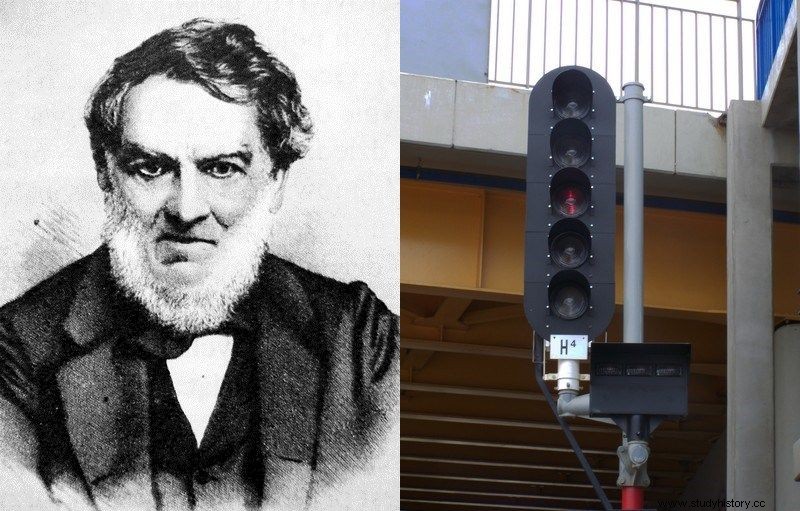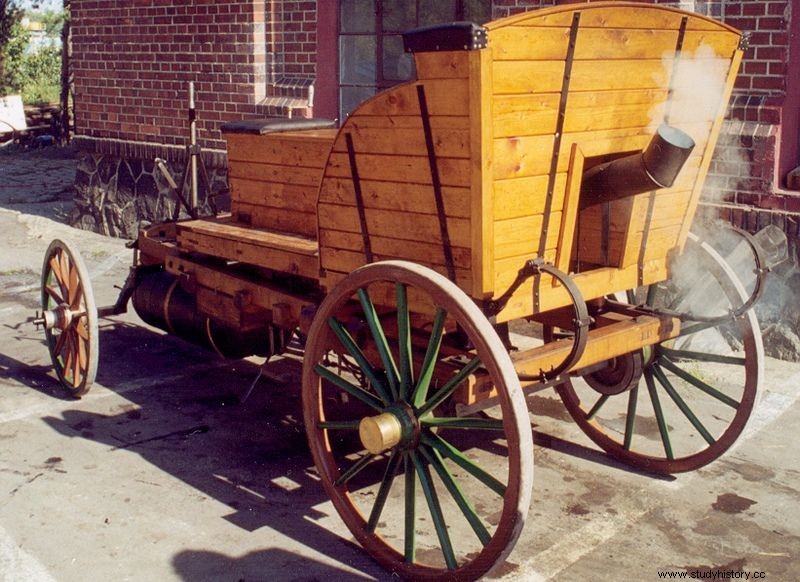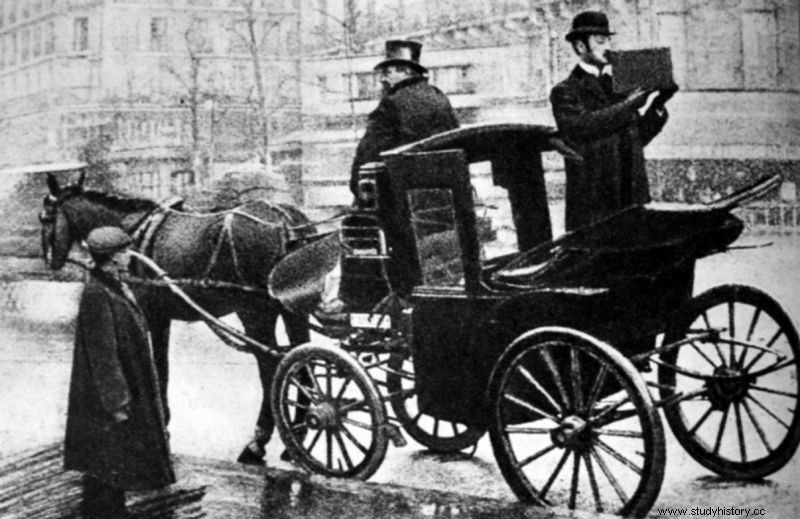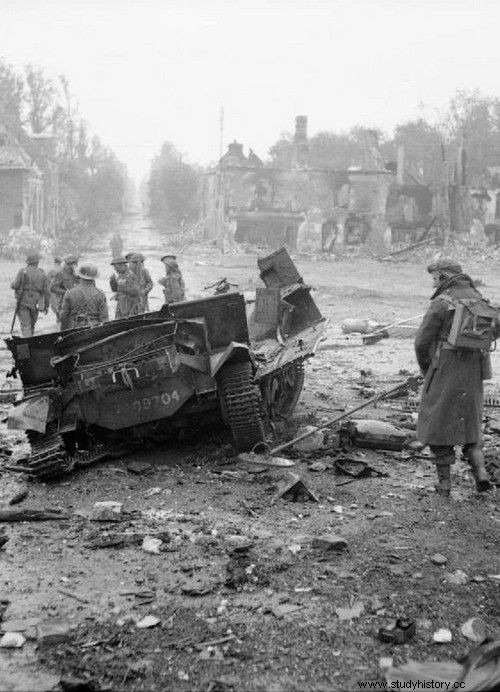The first film camera, a bulletproof vest, and even a ticket validator ... Inventions that influenced both great history and the daily life of millions. Who do we owe them to? Poles of course!
Some of them achieved international fame and money, others died poor and lonely. In the book Historia Polski 2.0:A Pole can, and a Pole too ... or how much the world owes us Jan Wróbel claims that we, Poles, invented almost everything only sometimes we don't remember it ourselves. Therefore, we remind you of our seven countrymen whose inventions changed or could change the course of history.
1. The Man Who Made the Canaries
Jan Józef Baranowski studied at the Vilnius University during the arrests of members of the Society of Philomats and Filarets, but avoided patriotic activities, focusing on science. He survived this way until the outbreak of the November Uprising, when he joined the ranks of the fighters for independence. In his case, Wojaczek ended in emigration.

The creator and his work - Jan Józef Baranowski and a semaphore (source:public domain).
In France, he did not intend to become depressed like many of his compatriots . As Jan Wróbel writes in Polish History 2.0:A Pole potafi ... :
Baranowski was, however, a different type of emigrant. Energetic, gifted and with a good command of French, he set to work. In the 1940s he was employed by the French Railways and it was a successful marriage.
Soon the young Pole began to be successful as a constructor We owe him, inter alia, ticket validator and semaphore, i.e. automatic railway signaling system .
Interestingly, he was also the author of one of the first Polish dictionaries for the British.
2. Silesian Stephenson
Józef Bożek was a mechanic and constructor from Cieszyn Silesia. He studied mechanics and mathematics in Brno, and then Prague, where most of his inventions were made. Among them were, among others a mirror grinding machine, elevator and numerous prosthetic arms and legs for war invalids.
In 1815, probably knowing nothing about George Stephenson's locomotive, built the first steam-powered carriage on the European continent and two years later a boat with a similar engine.

Replica of Józef Bożek's steam powered vehicle (source:public domain).
Inventions were made at a similar time, but it was Stephenson who made history thanks to his better financial situation, contributing to the development of the railroad. Idol wasn't so lucky. He died in loneliness and poverty in Prague.
3. The famous pianist and creator of car wipers
Józef Hofmann was born in Krakow and showed love for music from an early age. As a child, he gave piano concerts during tours in Europe and America. He was a student of the great Russian composer and pianist Anton Rubinstein . The science was not in vain and in 1894 he received the first prize in the prestigious competition in the name of his teacher in Hamburg.

The article was written, among others based on the book by Jan Wróbel "Historia Polski 2.0:a Pole can, a Pole too ... or how much the world owes us" (Znak Horyzont 2015).
Music was not, however, Hofmann's only passion. He loved math and technology, so during breaks from playing, he invented newer and newer devices. Some of them were related to the profession practiced. An example is a raised piano stool or devices used to measure the pressure of a pianist's fingers. However, most of the over one hundred patented inventions were of no use to concerts.
Hofmann also invented an electric clock and a cooking machine, as well as car wipers, which he created by observing the movement of a metronome. Music was also an inspiration for another invention that is still present in our offices today, i.e. the paper clip . We owe it to Hoffman's liking for the curved shapes of the notes.

Józef Hofmann during a solo performance at the Metropolitan Opera in New York. The idea for car wipers was born in his head during musical exercises (source:public domain).
4. Da Vinci from the Vistula River
Jan Szczepanik can undoubtedly be called the Polish equivalent of Thomas Edison or Leonardo da Vinci. He came from the vicinity of Krosno, but was educated in Kraków. There he developed his interests in Ludwik Kleinberg's "Camera Magazine". Szczepanik was such a gifted self-taught person that in 1898 his employer founded a society in Vienna to implement the student's inventions.
Szczepanik soon launched a plant producing perforated cards for jacquard machines he had perfected. It sounds scary, but it was really about modernizing the textile industry with the photoelectric method of pattern weaving.
This is not the end, however, as Szczepanik was a versatile inventor. We owe him the telectroscope, which is the progenitor of today's television , and the color film system ousted from the industry only by the American "Technicolor". His achievements also include color photography, photosensitive colored paper and a bulletproof vest , patented almost at the same time also by another Pole, Kazimierz Żeglenia.
5. The third brother of Lumière
Kazimierz Prószyński is considered a pioneer of cinema. He was the son of Konrad Prószyński, the creator of the first primer of the Polish language. He graduated in Belgium, where he created his first pleographer - a camera for recording and playing films. At that time, even August Lumière gave him priority in the field of cinematography: I was, together with my brother, the creator of a French film, but there was also a Pole, a certain Kazimierz Prószyński, who was far ahead of us.

Kazimierz Prószyński uses his invention to film the streets of Paris in 1909 (source:public domain).
Prószyński did patent his invention a year before his French brothers. Moreover, he perfected the cinematic technique, allowing the recorded images to be viewed without shake. His devices were soon produced by the largest concerns. Our inventor founded the first film studio in Poland - Pleograf Share Society. She produced films about everyday life in Warsaw.
In 1909, Prószyński also patented the invention to which we owe action movies, the aeroscope. It was the first handheld film camera . Thanks to his invention, he made a film report on the coronation of King George V. No one had produced such pictures before.
The brilliant Pole, however, did not have any marketing talent his competitors and his next label, this time American, went bankrupt. Prószyński himself returned to Poland, where he was caught by the outbreak of World War II. After the fall of the Warsaw Uprising, he was sent to the Mauthausen-Gusen concentration camp, where he died.
6. Father of world electronics
Jan Czochralski was born into a carpentry family near Bydgoszcz. From an early age, he was interested in chemistry. His dangerous experiments even resulted in him being forced to leave his home and start working in a pharmacy at the age of just 16. Soon Jan started his studies in Berlin. There, in 1916, he developed a method for measuring the rate of crystallization of metals. According to an anecdote, it happened thanks to the accidental dipping of the pen's nib into the crucible with molten tin.
Without our compatriot's mistake, we would not be able to live today. All electronic devices we use - mp3 players, laptops, smartphones or digital cameras - operate on the basis of single crystals produced by a method invented by Czochralski . He himself gained worldwide fame, he was offered employment, among others, by Henry Ford.

If it had not been for Jan Czochralski's mistake, the development of electronics would have been impossible (photo:Alex Washburn / Wired, CC BY 1.0).
The scientist returned to Poland, where he survived the war, running, with the consent of the Germans and the Polish underground, the Materials Research Institute. In 1945, he was accused by the new authorities of collaboration and was repeatedly humiliated. He eventually died of a heart attack following one of the brutal searches at his factory.
7. A bomb patent that influenced the course of World War II
Józef Kosacki was one of the young and talented soldiers-engineers of pre-war Poland. He graduated from, among others engineer training in Modlin. Until 1939, he worked at the State Telecommunications Institute in Warsaw. After the outbreak of the war, he went to the Polish Army in France, and after the fall of Paris - to Scotland. There he witnessed an event that affected his life. He saw an accident of a Polish patrol hit anti-landing mines.

A mine detector designed by Józef Kosacki in action. France, 1944 (source:public domain).
This inspired him to develop his old idea of using radio waves to detect mines in the ground. After many attempts, managed to create a detector known as "Polish Mine Detector" . It was first used in the Second Battle of El Alamein, where it contributed to the defeat of Erwin Rommel's troops.
Kosacki voluntarily resigned from patenting the invention which was used by armies around the world until the end of the 1990s. The inventor himself returned to Poland, where he worked as an engineer until his retirement.
Bibliography:
- Marek Borucki, Great Forgotten People. Poles who changed the world , Ed. Muza, Warsaw 2015.
- Anna Pragłowska, Pictures and colors. About the inventions and life of Jan Szczepanik , S-CAN Publishing House, Tarnów 2012.
- Jan Wróbel, History of Poland 2.0:A Pole can, and a Pole too ... or how much the world owes us , Znak Horyzont, Krakow 2015.
- Michał Pacut, Polish mine detector , [in:] website of the Polish Army Museum, [accessed August 16, 2015].
- Sylwester Czochralski, Website Jan Czochralski October 23, 1885 - April 22, 1953 [access:August 16, 2015].
